
All Solutions

Explore all the solutions you can create with Paperform: surveys, quizzes, tests, payment forms, scheduling forms, and a whole lot more.
See all solutions











Connect with over 2,000 popular apps and software to improve productivity and automate workflows
See all integrationsProducts
Solutions
All Solutions

Explore all the solutions you can create with Paperform: surveys, quizzes, tests, payment forms, scheduling forms, and a whole lot more.
See all solutionsIntegrations

Connect with over 2,000 popular apps and software to improve productivity and automate workflows
See all integrationsResources
10 home office upgrades to level up your WFH setup

This blog post provides essential work-from-home tips shared by our experienced team to enhance your productivity and mental well-being while working remotely. It covers structuring your workday to match your most productive hours, the psychological benefits of dressing in work attire instead of loungewear, and the importance of staying active and getting outside. The post also emphasizes using digital tools like Trello, Asana, and Paperform to stay organized and setting clear boundaries with housemates or family. Additionally, it suggests incorporating mindfulness or meditation into your routine and using a Pomodoro timer for balanced work-break intervals. These tips are designed to help maintain a healthy work-life balance and stay connected with your team in a remote working environment.
Working from home brings a lot of benefits: spending more time with family, cutting down on commute time, never needing to wear another pair of dress shoes. But for all of the positive that comes with remote work, it poses its fair share of challenges.
It can be difficult to set firm work boundaries when your office is in your bedroom. Getting out of the house becomes an event to plan when you work from home 40 hours a week. And creating a productive, functional workspace in an apartment or shared home is no easy feat.
Because the shift to remote work was sudden for so many, it’s no wonder that many workers turned to temporary solutions in their home offices: stacked books instead of laptop risers, cramming pillows into dining chairs for lumbar support.
Love it or hate it, remote work is here to stay. By the end of 2022, it’s projected that 25% of all jobs in North America will be remote. It’s time for some long-term solutions. Taking the time to spruce up your work-from-home space is a worthy investment of time and money, both for your career and your mental health.
Because Paperform has always been a remote company, we know a thing or two about how to get the most out of your work-from-home setup. From ergonomic chairs to potted plants, these ten home office upgrades can boost your productivity and your mood.
1. Ergonomic chair for a healthier back
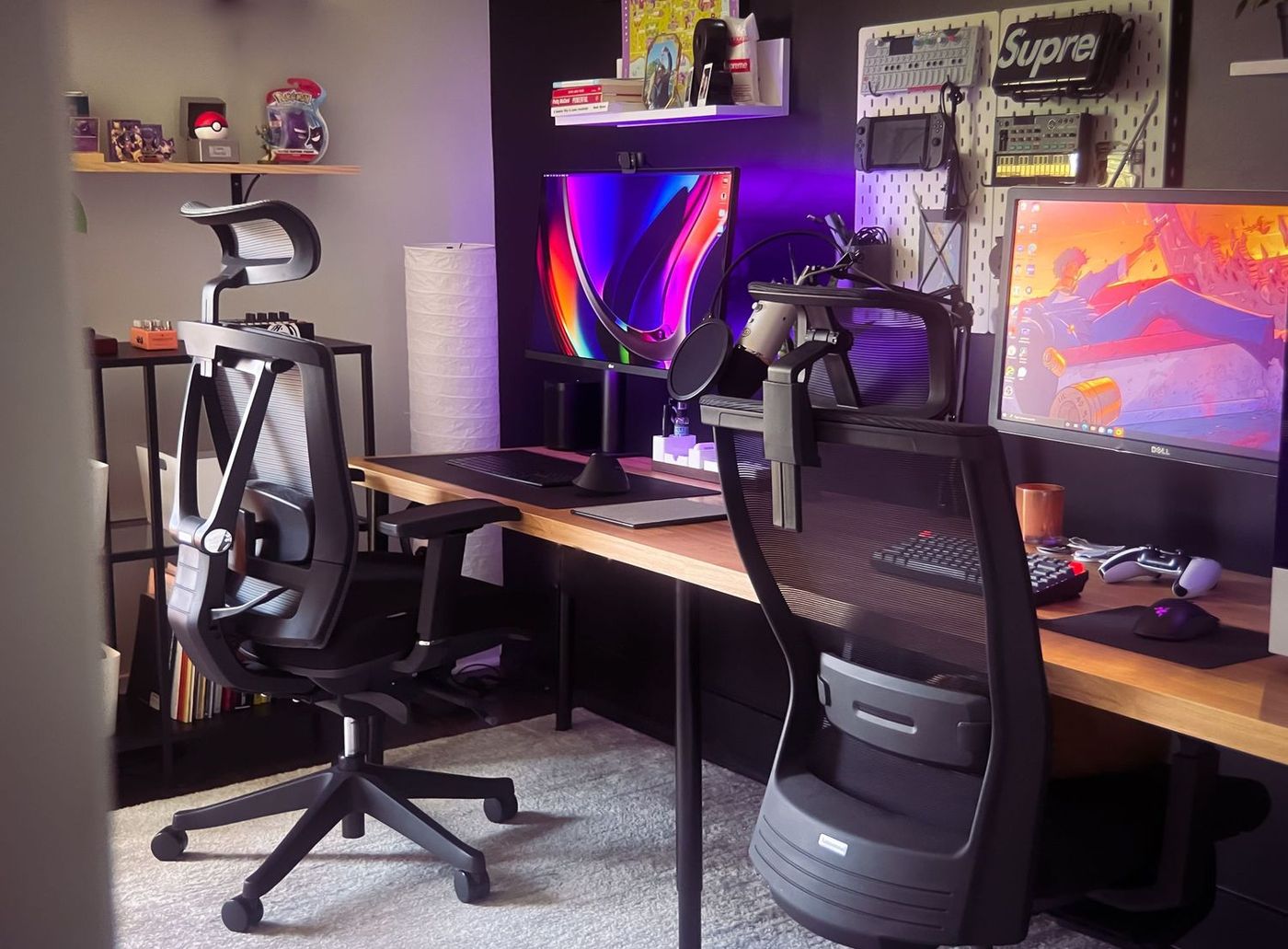 (Photo: Dennis Cortés)
(Photo: Dennis Cortés)Unless you jumped on the treadmill desk bandwagon, you probably do most of your work at home from an office chair. Unfortunately, sitting for extended periods isn’t awesome for your health.
Over time, sitting excessively can lead to poor posture, backaches, and more serious concerns (like high blood pressure).
Sitting in a chair that lacks support makes these problems even worse—not to mention, they’re seriously uncomfortable. If you notice that your back and neck ache after work or that your legs often fall asleep at your desk, you may benefit from an ergonomic chair.
An ergonomic chair helps correct your posture automatically so that you can crank out a long day at the home office without any back pain. And while the thought of an ergonomic chair may bring up images of bulky plastic monstrosities, the ones listed below are here to show you another way.
Recommendations
- Capisco chair by Fully: While this one is a little pricey, Fully is a certified B-corp company, so you can feel good knowing your swanky new ergonomic chair is doing some greater good in the world.
- Union and Stale chair at Staples: If you’re looking for a posture-friendly desk chair that won’t break the bank, this $100 one from Staples might do the trick.
- SOHO soft pad management chair: A great mid-range option, the SOHO soft pad chair has a sleek brown leather surface and a beautiful, understated design.
2. Whiteboard for jotting down ideas
 (Photo: This is Engineering RAEng)
(Photo: This is Engineering RAEng)When working from home, it's natural for your work obligations and your life obligations to bleed together. And when you need to walk the dog, schedule a conference call, send a million emails, and prep your kid's sack lunch, your reminder list can quickly get bigger than a regular journal or calendar can handle.
That’s where a whiteboard comes in handy. Whiteboards are a great way to keep track of your many to-dos without wasting paper or covering your desk in sticky notes.
Plus, research shows that jotting down notes by hand can improve your memory, so the act of writing your reminders on your board can actually help you need them less.
A whiteboard is a great office upgrade, whether you use it to create a schedule that’s easy to erase and alter, jot down reminders, or leave kind notes to yourself. (It also doubles as a quick entertainment tool for your kids while you’re trying to focus on your work call.)
Recommendations
- Maxtek 24 x 18 Whiteboard: This $36 magnetic whiteboard is an excellent middle-of-the-road option. It’s not too big or too little, perfect for handling your to-do lists and a little more.
- Luxor Lean 48 x 36 Whiteboard: If your lists are seriously out of control, this $197 board may be for you. If you have the wall space (and budget) to support it, you’ll have plenty of room for all your ideas.
- Office Depot Mini 8 ½ x 11 in Whiteboard: Coming in at exactly the size of a sheet of printer paper, this $11 whiteboard is bound to fit anywhere. It’s great for compact spaces and daily to-do lists.
3. Houseplants for a breath of fresh air
 (Photo: Mikey Harris)
(Photo: Mikey Harris)For those who lack a green thumb, housing a plant in your home may feel like a recipe for disaster. But with just a tiny bit of plant know-how and the proper plant selection, even the worst gardeners can enjoy greenery in the home.
Research suggests that we should—being around houseplants offers loads of positive effects, like boosting serotonin levels and soothing your parasympathetic nervous system. Houseplants are a great office upgrade. They’re a beautiful, eco-friendly way to decorate and reduce stress at the same time.
When it comes to picking houseplants, take into account the amount of natural light available in your office space. Not all houseplants need hours and hours of direct sunlight. Moderate light plants (like Pothos or Snake plants) thrive in indoor filtered (indirect) sunlight.
Whichever plant you choose, you can enjoy the built-in breaks that watering and plant upkeep provide throughout the workday. Just make sure to read up on how much water your particular plant needs— an orchid is a lot thirstier than a succulent.
Recommendations
- Pothos plant: The pothos is a fast-growing ivy-like plant that does well indoors and is fairly hardy to novice gardeners.
- Snake plant: The snake plant (pictured above) is another hardy option for new plant parents. Its long leaves can thrive in direct sunlight or in darker corners of your office.
- Sky plant: If you don't want to get your hands dirty, consider the sky plant. It grows without soil: just set it up in a terrarium or hang it from a string.
4. External monitor to help you stay organized
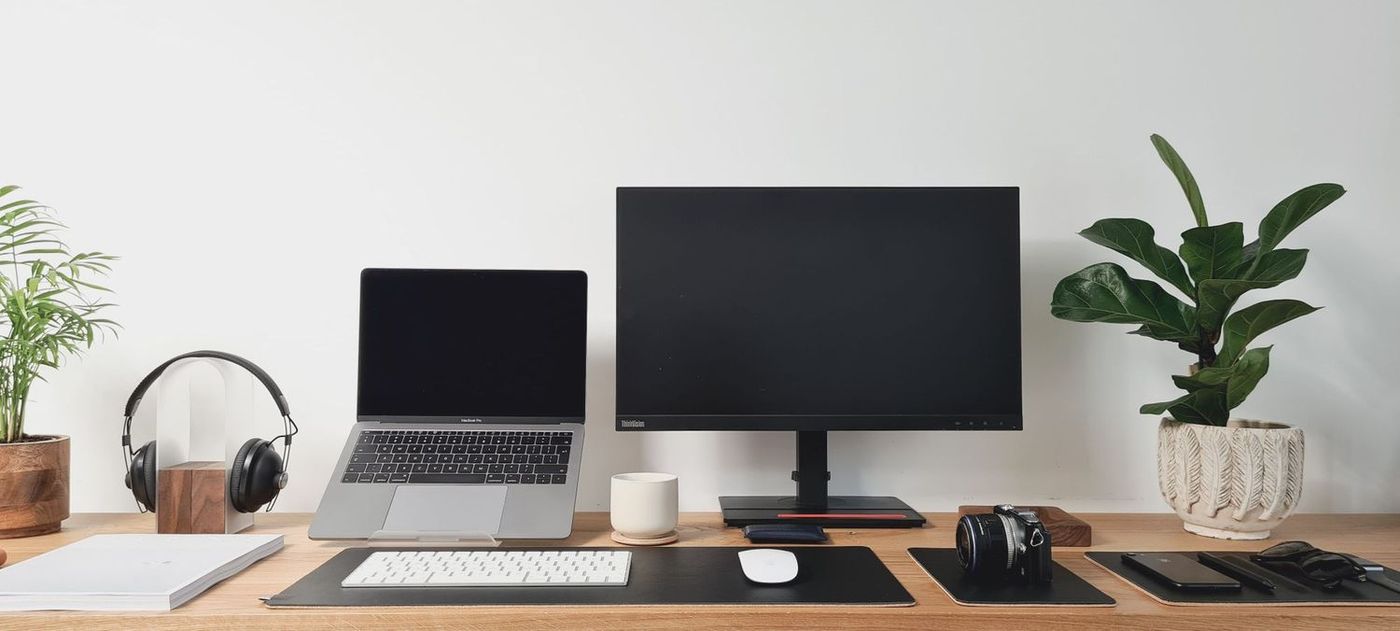 (Photo: Workperch)
(Photo: Workperch)Ask anyone who uses an external monitor and you’ll hear the same refrain: once you start, you can’t go back. Being able to spread your work across multiple screens helps cut down on your mountain of open tabs and keep your many tasks organized.
External monitors are great for remote workers who do most of their meetings virtually. Having two screens allows you to set up your video call on one screen and access any relevant meeting documents from the other.
It also makes sharing your screen a heck of a lot easier. Instead of searching through all of your open tabs (or sharing your email inbox with the entire Zoom call), just drag whatever tab or doc you want to share onto your monitor and share that entire screen.
External monitors don’t have to break the bank, nor do they need to eat up your entire desk space like crawling ivy. These monitors are sleek, varied in size, and adaptable for any workspace.
Recommendations
- LG Ultrafine 4K Monitor: Great for content creators working with graphics, like videographers or photographers. It'll even charge your laptop while you work.
- Acer 24-inch HD Monitor: This monitor has a sharp enough resolution for most office workers, can be adjusted to your desired height and angle and comes in at only $215.
- Alienware 34-inch Curved Monitor: If more screen space is what you need, Alienware has you covered. Its curved design gives you tons of screen space, making it great for those who work by day and game by night.
5. Wireless keyboard for comfortable typing
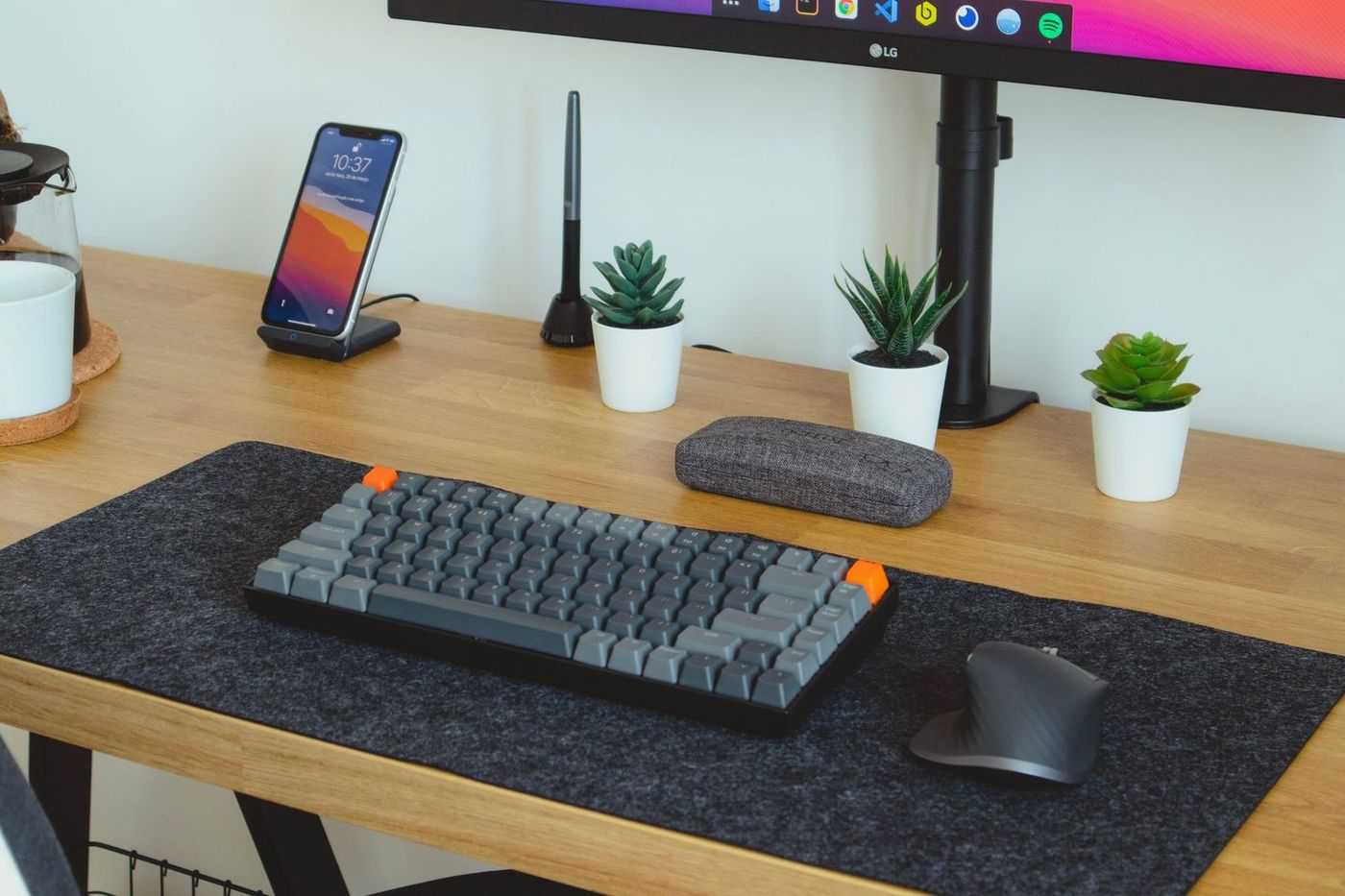 (Photo: Nubelson Fernandes)
(Photo: Nubelson Fernandes)A wireless keyboard is a perfect partner for your new external monitor. And unless you’re solely using your external monitor in conjunction with a laptop, you’ll need one to do pretty much anything. Without it, you’ve really just got a bonus screen.
A good wireless keyboard and monitor setup can boost productivity and energy by making your workspace more ergonomic and physically comfortable.
By setting up your monitor at eye level, and your keyboard comfortably under your wrists, you can naturally encourage your body to stay in alignment. In other words, your back will thank you.
Recommendations
- NuPhy Air75: At $110, this wireless keyboard gives you all the basic features you need to get to work, plus customization options and a fun carrying case.
- EKM01 ProtoArc Ergonomic Keyboard and Mouse combo: The ergonomic design of this keyboard and mouse combo is intended to ease wrist pain.
- Logitech Wireless Keyboard: This budget-friendly Bluetooth keyboard comes in at $36 and has a stylish design. The perfect no-frills option.
6. Wireless mouse so you can break up with your trackpad
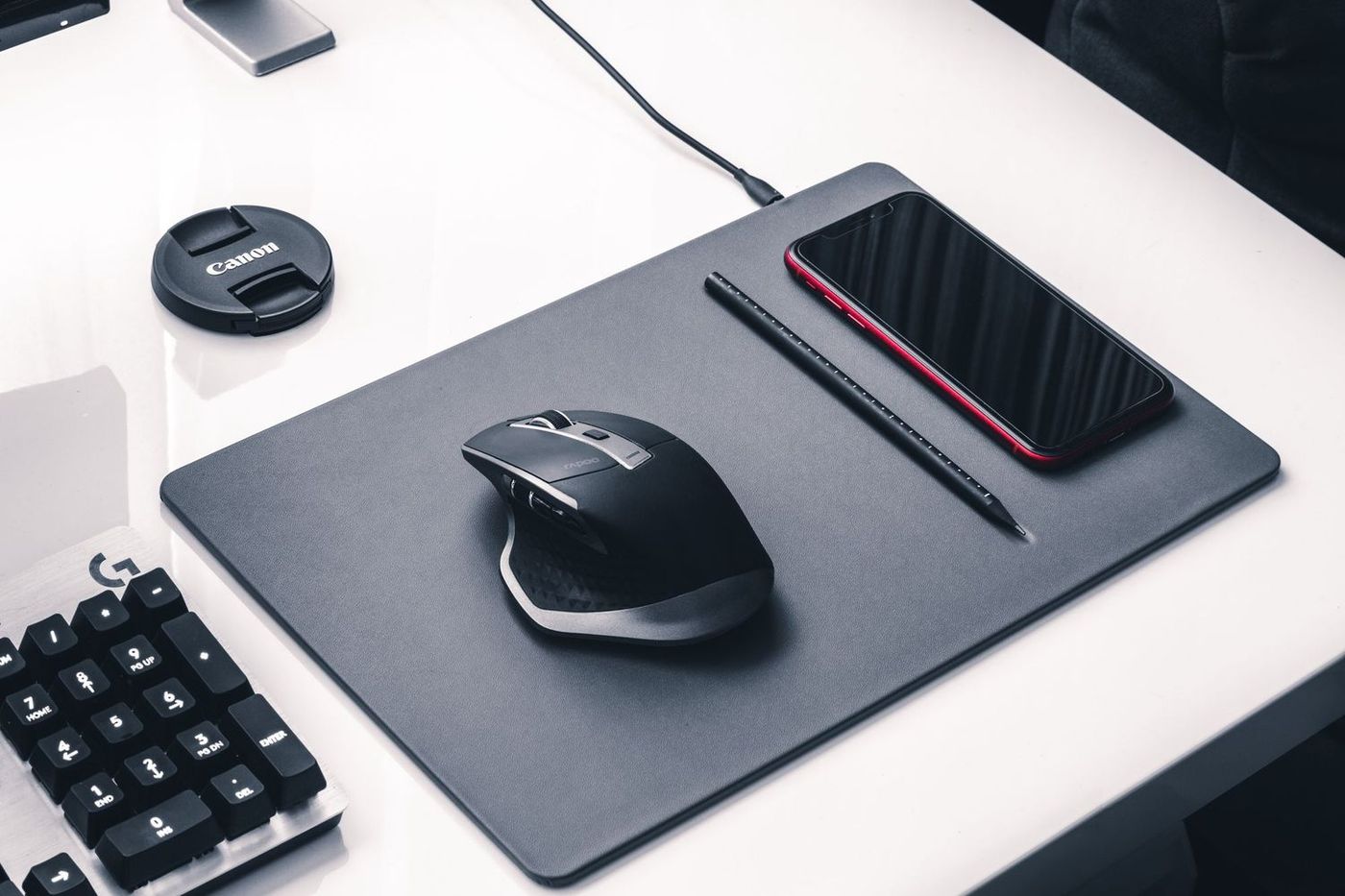 (Photo: Sebastian Bednarek)
(Photo: Sebastian Bednarek)You’ll just need one more thing to complete your new office setup—a wireless mouse. Like the keyboard, a wireless mouse gives your external monitor functionality. Plus, everyone loves a tacky personalized mouse pad.
There are loads of wireless mouses (mice?) available online, each boasting a different specific purpose. Whether you’re gaming, coding, typing, or editing videos, there’s an ergonomic mouse for you.
You could opt for a corded mouse, but you run the risk of tangling it up in your other desk accouterment. A wireless mouse syncs seamlessly with your monitor or laptop and allows for more fluid movement. Most are rechargeable, with a battery life strong enough to last at least a few days.
Recommendations
- Microsoft Bluetooth Mouse: This cheap mouse is only $12 and comes in a good range of colors to match your other accessories.
- LEKVEY Ergonomic Mouse: If you’re looking for wrist comfort, this $35 ergonomic vertical mouse might be the best option for you. The unique, blocky shape is designed to support your wrist and avoid joint pain.
- Logitech MX Master Wireless Mouse: This swanky wireless mouse has an ergonomic design and two scroll wheels, and it tracks on glass. If you’ve got a $100 budget, it’s a great choice for a work or gaming mouse.
7. Laptop riser for better posture (and easier typing)
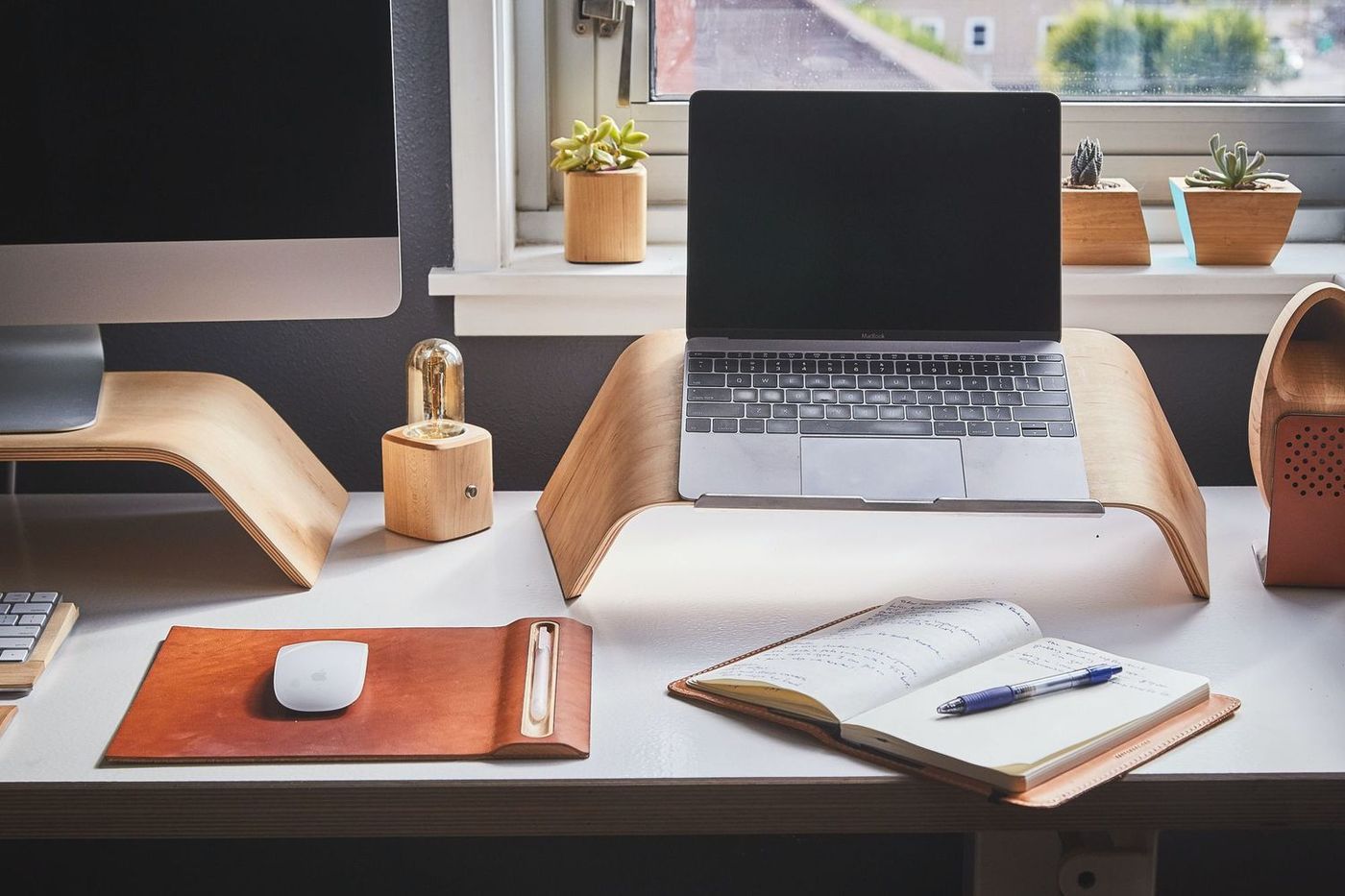 (Photo: Grovemade)
(Photo: Grovemade)The external monitor life isn’t for everyone. Maybe you don’t like the look of a big screen looming from your desk 24/7. Maybe you work on the go, bouncing from coffee shop to airport terminal to couch. No shame.
For those who prefer to work solely from a laptop, a laptop riser is an invaluable tool. These little contraptions lift and angle your laptop to your desired height, so you can work more comfortably.
And if you do decide to get your monitor in on the action, a riser allows you to lift your laptop to the same level as your monitor.
By raising your laptop to eye level and angling the keyboard slightly down, you improve your posture and reduce tension in your neck and wrists. It also protects your laptop from accidental spills, meaning great news for parents working from home: no more apple juice sticking up your spacebar.
Recommendations
- Wooden Laptop Stand: This portable wooden laptop stand is as stylish as it is functional. For $33, you’re hard-pressed to find a more elegant and portable option.
- Besign Aluminum Laptop Riser: Only $24, this laptop riser has an adjustable base and a minimalistic design to prevent laptops from overheating, all wrapped up in a sleek black matte look.
- Boyata Laptop Riser: This laptop riser is ideal for writers. It’s fully adjustable while still being steady enough to type on. It also comes in almost any color.
8. USB-C hub to cut down on extra cables
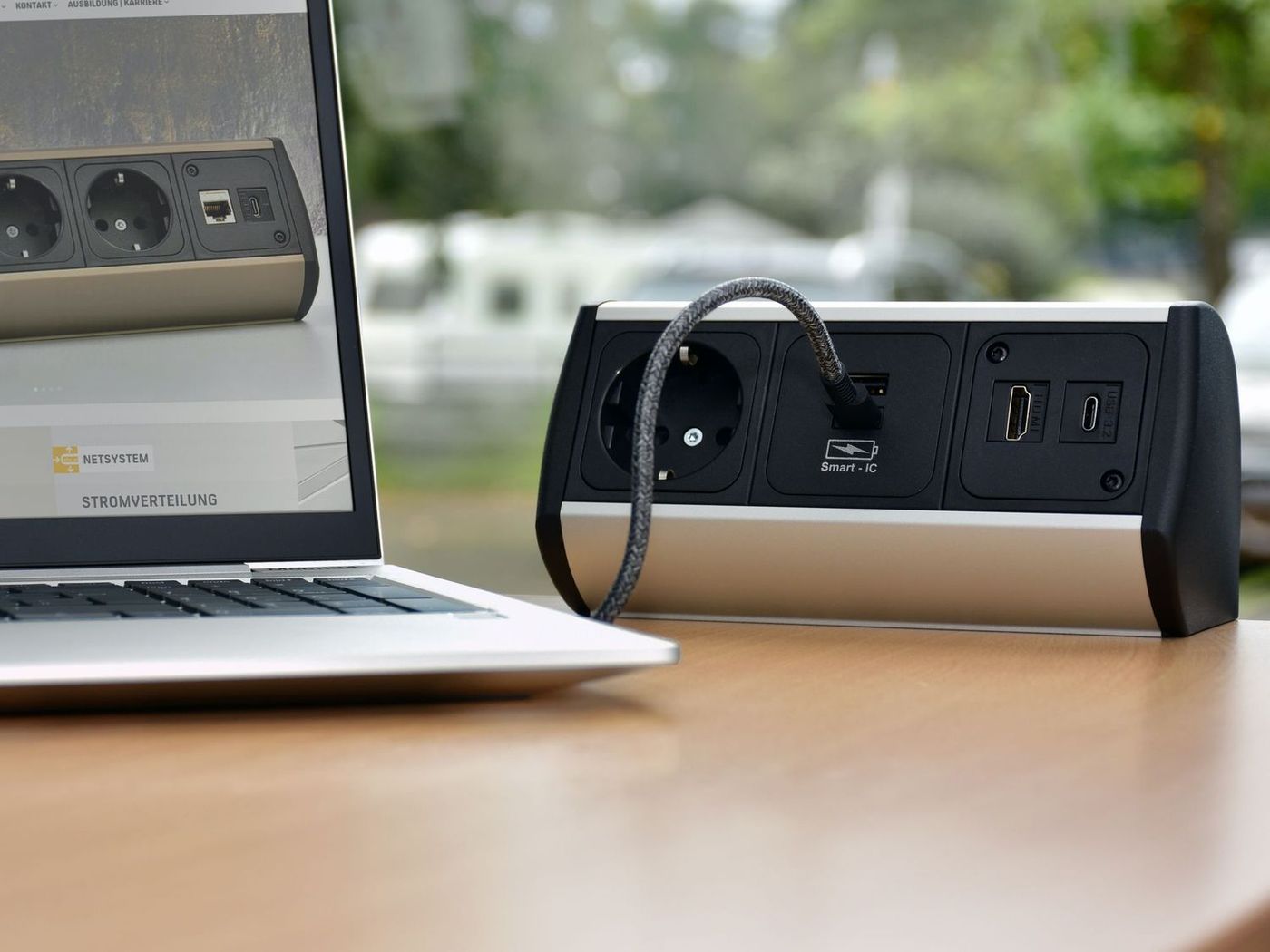 (Photo: Mike Winkler)
(Photo: Mike Winkler)Whether you’re team monitor or team laptop, a USB-C hub can simplify your work-from-home setup. Firstly, it makes it easier to move between workstations without unplugging a million cords—just unplug the USB-C hub and be on your way.
This handy tool acts as an adaptor between your favorite devices and the USB-C port in your computer. By creating many ports from just one, you can connect external hard drives, camera cards, and more, all from one tool.
Like the headphone jack and the CD slot, non-USB-C style ports have mostly become a relic of the past. Most computers built after 2015 don’t support USB-A ports, with most laptops (Macs in particular) only supporting USB-C style plug-ins.
Unfortunately, your tools don’t change along with Mac’s whims and fancies. That’s where these USB-C hubs come in handy.
Recommendations
- Anker 7-in-1 USB C hub: A solid mid-range option, this $40 USB C hub offers seven ports, including one for SD cards and flash drives.
- Ativa 4 port USB-C hub: A good choice for those on a budget. For only $13, you get four USB-A ports, compatible with most external keyboards or hard drives.
- UGREEN 6 port USB C Hub: The Goldilocks option, this USB-C hub comes in at $23 and has 6 helpful ports, including one for SD/TF cards and multiple USB A ports. Plus, it’s stylish.
9. Essential oil diffuser for ambiance
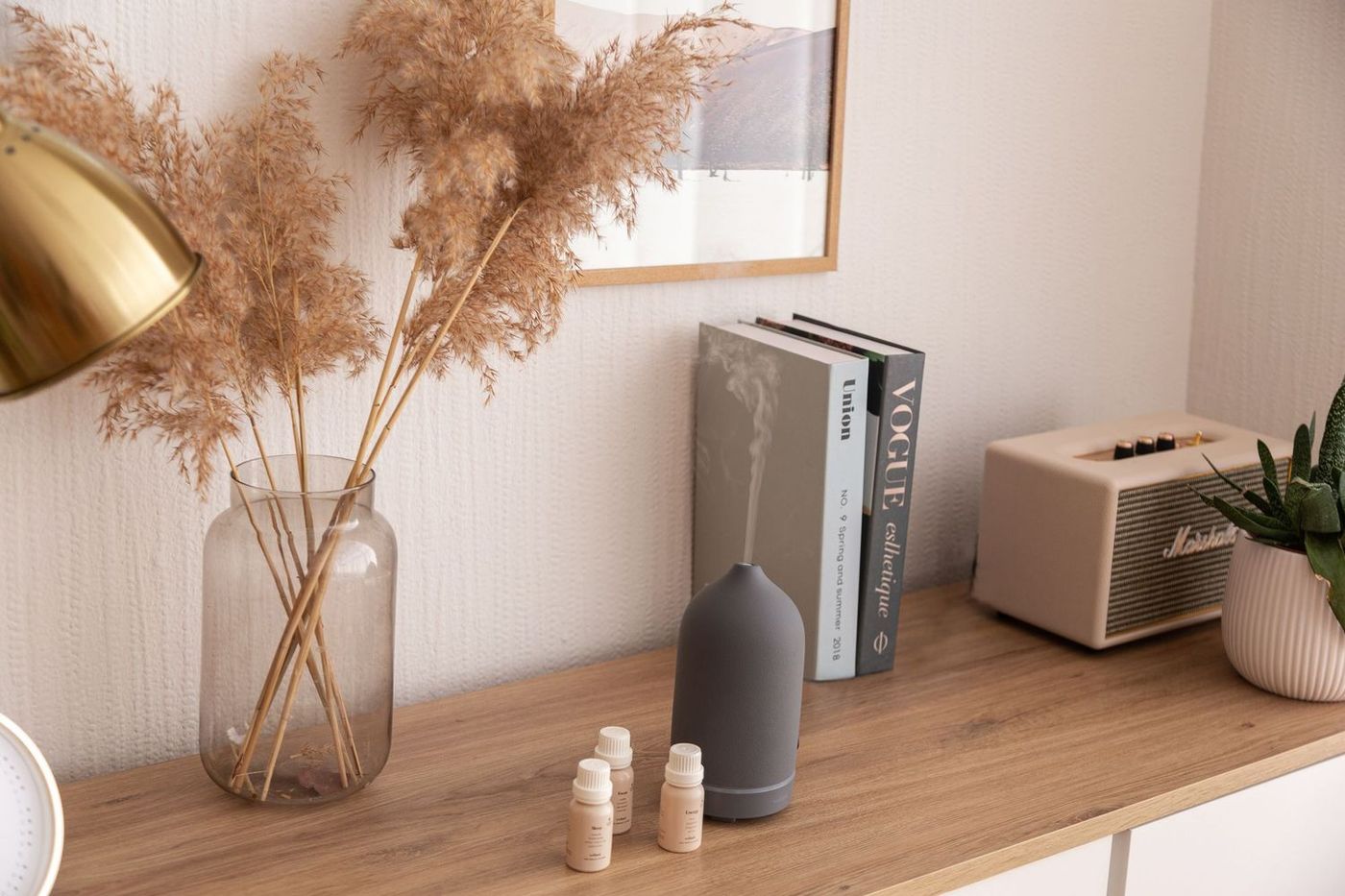 (Photo: Volant)
(Photo: Volant)Not all of your home office improvements need to be purely practical. Ensuring that your work environment feels good is just as important as keeping your posture in check and your tech working swimmingly.
Any tool that helps make work feel less like, well, work, is a great tool to have.
Essential oil diffusers can be used to create a positive, relaxing work environment through aromatherapy. Research suggests that odors can alter your psychological state. Citrus oils have been studied for their mood-boosting properties, as well as lavender for its relaxing ones.
There’s no real need to dive into the research on what oils promote what feelings. Just find a scent that works for you, and enjoy. The soft smell of lavender or earthy pine can help relieve stress throughout the workday and promote a more relaxing and pleasant environment.
Recommendations
- Vitruvi Stone Essential Oil Diffuser: If you’re looking for one that looks as sleek and peaceful as it feels, the $123 Vitruvi diffuser is a great option. The smooth silhouette (available in 10 different colours) will look great at any desk.
- Pure Daily Care Aromatherapy Set: This is a great option for those new to aromatherapy. For only $40, you can get a simple diffuser and a handful of essential oils to get you started.
- Vorda Wooden Oil Diffuser: If you’re looking for the simplest essential oil diffuser, Vorda takes the cake. The wooden design means there is no cords, no charging, and no water involved.
10. Soft light desk lamp to create a calm environment
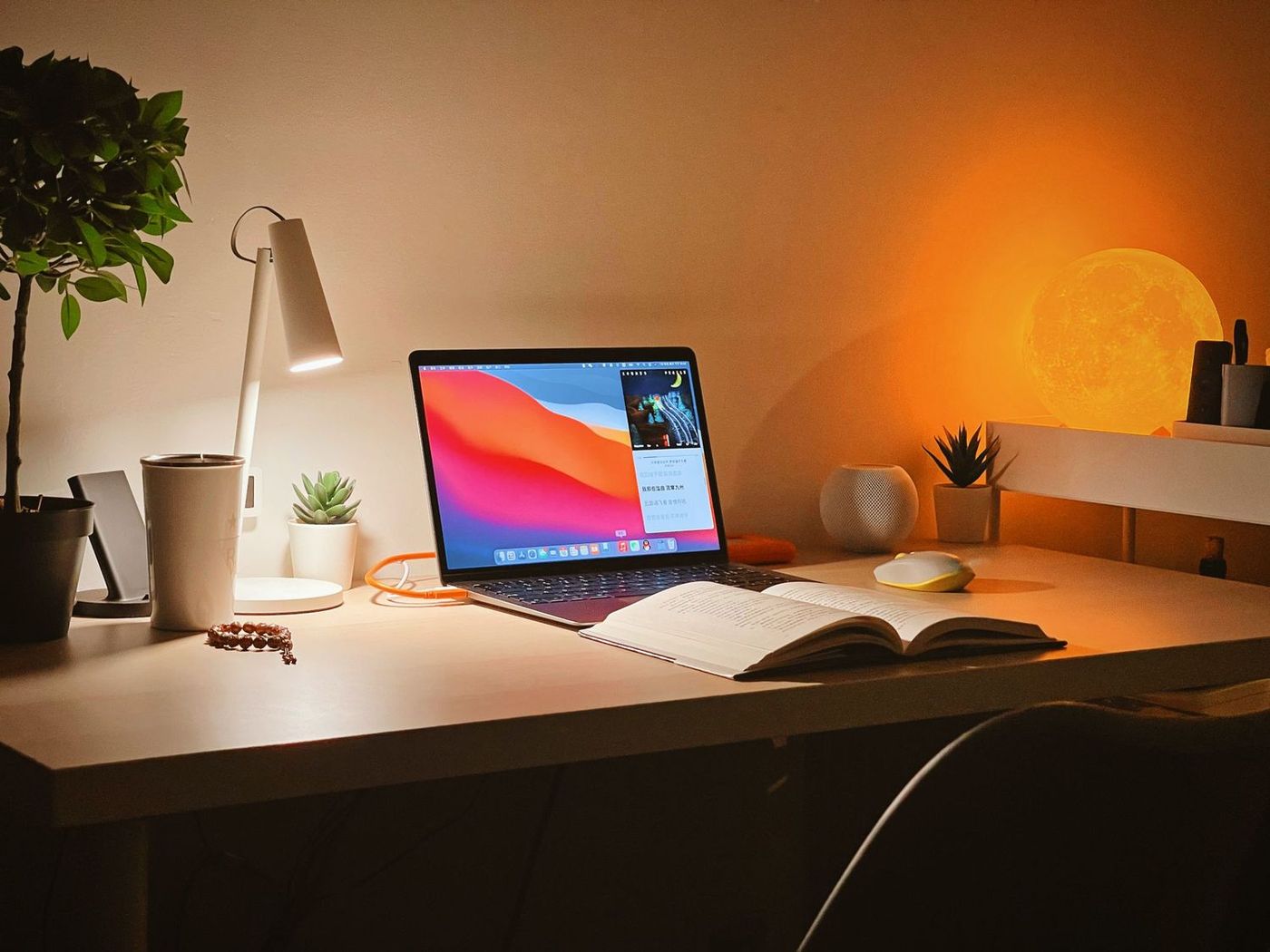 (Photo: Iewek Gnos)
(Photo: Iewek Gnos)Like an oil diffuser, a soft light desk lamp can help bring some tranquillity to your workspace. It can also up the style level of your work from home set up, making it a great addition to workspaces in a common area.
We all know the harshness of a fluorescent bulb– just think of the sharp lights of a hospital room or a Macy’s dressing room. Nobody feels (or looks) good with the power of 1,000 suns blaring down on them.
Not to mention, harsh light can cause eye strain, leading to increased fatigue and headaches. Using a soft light desk lamp can help alleviate these problems and look good doing it.
If none of the options below speaks to you, you can likely soften your pre-existing desk lamp by trading out the bulb. Any bulb with a wattage under 500 lumens will have a softer feel and a more yellowish, calming glow.
Recommendations
- West Elm Linear Wood Table lamp: This table lamp has an understated wood and metal style. At $179, it’s a little pricey, but the soft downward-angled light and modern design make it a strong contender.
- Lonrisway Desk Lamp: If you’re looking for style on a budget, Lonrisway has you covered. This unique wooden dimmable lamp comes in at only $15.90 and is perfect for minimalistic office setups.
- BQHY Light Therapy Lamp: This $65 light therapy lamp includes four distinct lighting options intended to elevate mood, relieve tension from blue light headaches, and even combat Seasonal Affective Disorder.
Work-from-home tips from our team
With plenty of remote working experience under our belts, our team has banded together to share some of our favorite tips and tools to help you feel connected, productive, and mentally sound whilst working from home.
1. Structure your workday
You won't always be able to work at optimal productivity, so it's important to find when you work best.
"If you’re a morning person, use that extra time in the mornings to get a chunk of work out of the way," says Dean McPherson, our Co-founder. "This gives you some extra time in the afternoon to take a longer break."
"Ultimately, figure out which hours of your day are the most productive and make sure that you’re planning for those to be utilized to their best ability."
Focusing on individual tasks, rather than constantly checking the time, can help you work smarter too.
It’s best to not punch in and out and measure your success by hours worked. Instead, try to work smarter and recognize when you're not being productive. The 4-Hour Work Week is a great read that nails this concept.
2. Get dressed in real clothes
While the call of sweatpants can be alluring, getting dressed in the morning can lead to a spike in productivity, impact your job performance, and give you the boost of confidence you need to conquer your tasks.
"It's a good idea to change from your PJs to work clothes so you don't feel like laying down on your couch. Getting dressed for the day will help you mentally separate your work hours from your leisure ones."
Getting dressed for the day will help you mentally separate your work hours from your leisure ones.
3. Stay active and get outside
One of the best ways to combat the inherent inactivity that can accompany working from home is to schedule dedicated breaks for physical activity.
“If you have kids, take them to the park for an hour," says Diony McPherson, our Co-founder and COO.
"Otherwise, use YouTube to your advantage to plan 30-minute workout sessions. YouTube is a treasure chest of free workout videos."
Our Lead Developer, Josh, prefers getting outside. "Doing gardening and yard work during breaks is a great way to get moving and get some sun."
4. Connect with your team beyond work
Take every opportunity to interact with your team members and dedicate some time during the day to catch up on non-work-related things. The time before or after your scheduled meetings is a great opportunity to do this.
“Using a messaging app is great for communicating asynchronously," says Dean. "But talking over video chat is way more personal, and taking time to nurture those relationships will stop everyone from going crazy."
5. Set boundaries with family or housemates
When working from home, it's essential to set clear boundaries with those you live with. This includes letting them know your work schedule and the times you're most likely to need quiet or privacy.
Consider having a conversation about your work needs and how they can support you, such as by minimizing interruptions during work hours.
Simple signals like a closed door (or those new noise-canceling headphones!) can indicate that you're in deep work mode and shouldn't be disturbed.
6. Incorporate mindfulness or meditation
Beginning your day with mindfulness or meditation can have a profound impact on your focus and stress levels. Even just a few minutes of guided meditation can help clear your mind and set a positive tone for the day.
Apps like Headspace or Calm offer short, guided sessions that can easily fit into your morning routine. This practice has been shown to reduce anxiety, improve concentration, and enhance overall well-being, making it a valuable addition to your work-from-home routine.
Work from home in comfort and style
Even in the comfort of your own home, it’s important to carve out space for work that is functional, peaceful, and personalized to you.
The products on this list can help you create a work environment you won’t dread going to—even if the commute is just the walk from your bed to the living room.
Related reading
Form a better life now.
Get your 7 day unrestricted trialHere is the ultimate list of online form builders, what they do best, their pricing, and examples to...
Independent retailers are some of the smartest operators in small business—but they’re forced to wor...
Independent retailers are some of the smartest operators in small business—but they’re forced to wor...
The ultimate list of Black Friday and Cyber Monday SaaS deals for 2025